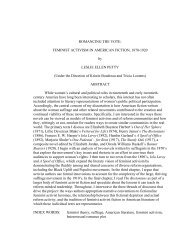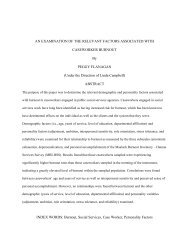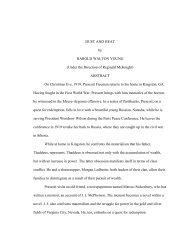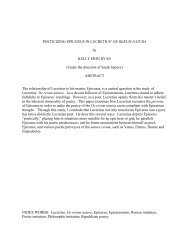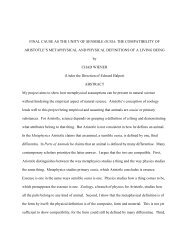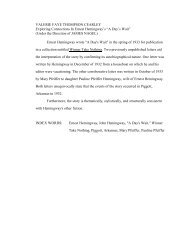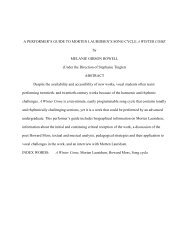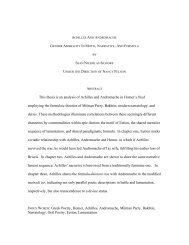exploring a popular culture body modification - Athenaeum Home ...
exploring a popular culture body modification - Athenaeum Home ...
exploring a popular culture body modification - Athenaeum Home ...
You also want an ePaper? Increase the reach of your titles
YUMPU automatically turns print PDFs into web optimized ePapers that Google loves.
prepubescent pubic region. In 1969, psychologists George D. Goldman and Donald S. Milman<br />
discussed an association between femininity and the obligation to surrender, mainly because<br />
female genitalia requires penetration and penetration is generally associated with violence. The<br />
desired <strong>body</strong>-image, studied by the authors and reported by informants involved “a fantasy of<br />
being a little girl, affectionately cuddled” (Goldman & Milman, 1969, p. 112). The authors<br />
found that participants voiced common concerns, such as needing to appear “hairless” and<br />
“skinny” (p. 107). Recognizing this as a potential problem in the social development of<br />
prepubescent girls, the authors were very clearly against media that showed “genital area [which]<br />
is usually blocked out and appropriately hairless” (1969, p. 107). Wendy Cooper considered that<br />
the sole purpose of pubic hair is to have an “outward badge of maturity and a visual marker to<br />
the genitals” (1971, p. 17). The goals of being older when you are youthful and youthful when<br />
you are older gained predominance toward the end of the twentieth century. Psychologists and<br />
gynecologists concern has mainly pertained to the self-development/self-image of young girls<br />
who are exposed to women with no pubic hair. In 1969, Goldman and Milman stated, “This<br />
becomes a serious problem as the social role of the female is increasingly blurred. The young<br />
girl frequently feels that she cannot fulfill certain standards of appearance, she is not accepted as<br />
a woman. The result is conflict and self-denial” (p. 107). This period of time in a female‟s life,<br />
known as menarche, occurs right before puberty and “serves as the focus around which <strong>body</strong><br />
image and genital function, including personal and sexual identity, are organized” (Swenson &<br />
Havens, 1987, p. 202). Concerns about the development of young women are even more evident<br />
today, especially with the <strong>popular</strong>ity of a hairless pubic area. Rachel Johnson, author of a 2002<br />
article in The Spectator entitled “Bush whacked,” voiced her concern about pubic hair depilation<br />
and age when she stated, “But I long for someone to explain to me why it is not OK for our<br />
19







